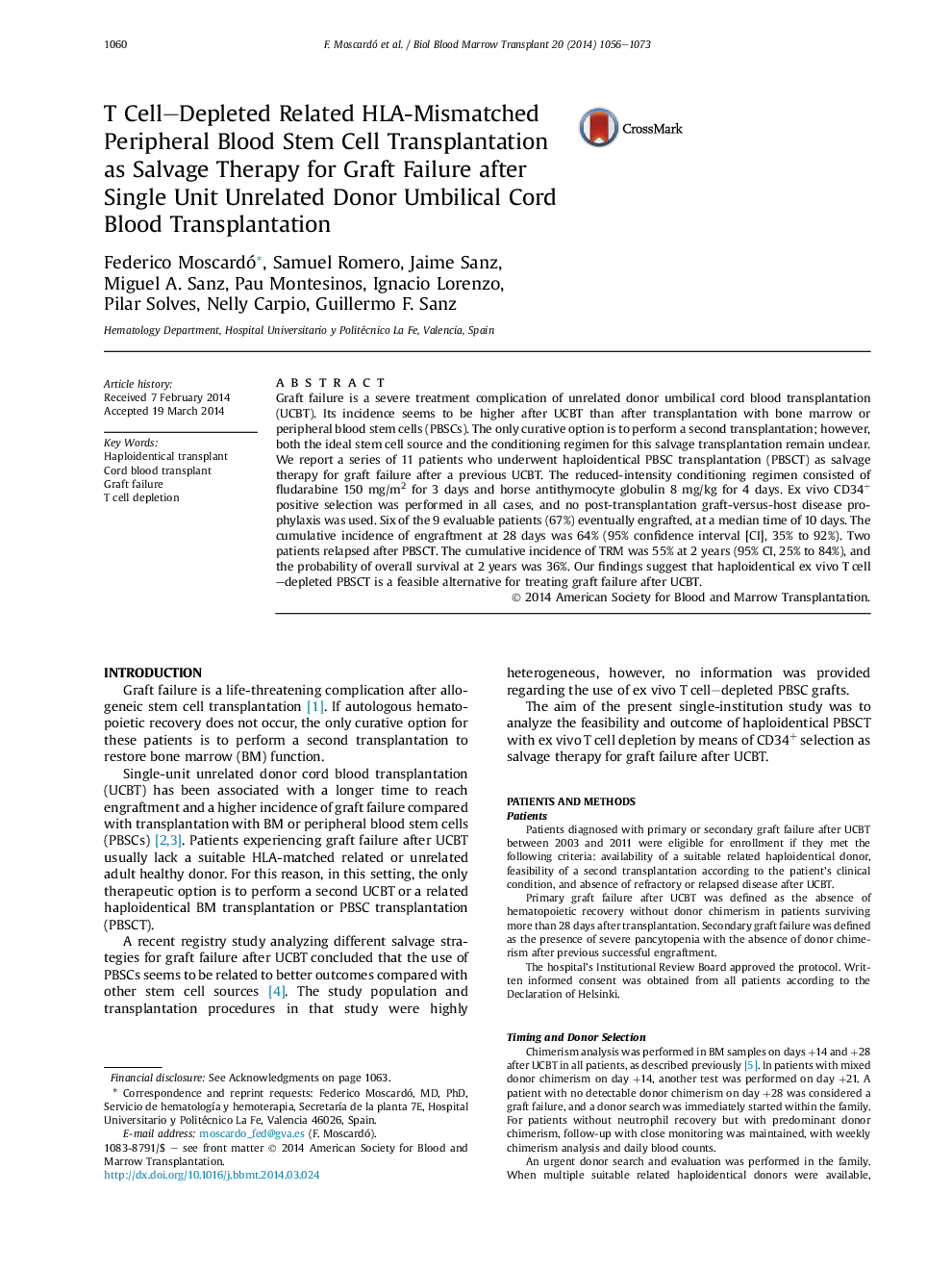| Article ID | Journal | Published Year | Pages | File Type |
|---|---|---|---|---|
| 2102323 | Biology of Blood and Marrow Transplantation | 2014 | 4 Pages |
Graft failure is a severe treatment complication of unrelated donor umbilical cord blood transplantation (UCBT). Its incidence seems to be higher after UCBT than after transplantation with bone marrow or peripheral blood stem cells (PBSCs). The only curative option is to perform a second transplantation; however, both the ideal stem cell source and the conditioning regimen for this salvage transplantation remain unclear. We report a series of 11 patients who underwent haploidentical PBSC transplantation (PBSCT) as salvage therapy for graft failure after a previous UCBT. The reduced-intensity conditioning regimen consisted of fludarabine 150 mg/m2 for 3 days and horse antithymocyte globulin 8 mg/kg for 4 days. Ex vivo CD34+ positive selection was performed in all cases, and no post-transplantation graft-versus-host disease prophylaxis was used. Six of the 9 evaluable patients (67%) eventually engrafted, at a median time of 10 days. The cumulative incidence of engraftment at 28 days was 64% (95% confidence interval [CI], 35% to 92%). Two patients relapsed after PBSCT. The cumulative incidence of TRM was 55% at 2 years (95% CI, 25% to 84%), and the probability of overall survival at 2 years was 36%. Our findings suggest that haploidentical ex vivo T cell–depleted PBSCT is a feasible alternative for treating graft failure after UCBT.
